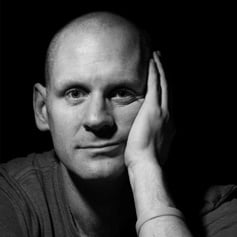
Physician first
In my early days of surgical training, particularly when I was a senior house officer in Nottingham and Derby, I got to meet some extraordinarily talented people who were doubly qualified (medicine and dentistry and often two surgical fellowships, one in medicine and one in dentistry) and these guys had a different insight into healthcare than I had ever seen or been privileged to learn.
The greatest of these was Phil Hollows who became a long-term friend and someone that I could share my troubles and wows with as well as a clinical supporter and someone who could bail me out of difficulty and trouble either with advice or actual practical surgery.
Phil understood that you needed to be a physician first before a surgeon (he always carried a stethoscope).
Phil knew his medicine but more than that he knew how to take a history from a patient and understood that the best diagnosticians understand that the patient always has the answer.
Phil understood that you had 2 ears and 1 mouth so that you listened twice as much as you spoke and he allowed patients to tell him what was wrong so that he could tell them what he thought he needed to do to fix them.
Classic alpha male orthopaedic surgery types don’t do that.
So, a knee = replacement knee so, hip = replacement hip.
More often than not the answer isn’t that stuck, when someone attends and says “I want a dental implant” they don’t.
What they want is a return to dignity from a position of compromised dignity or a return to function from a position of compromised function.
They don’t want dental implants, they want to be able to eat or they don’t want dental implants, they want to be able to smile.
Why they want to be able to smile is also something important but first understanding what the whole eco system is doing and understanding if they are well physically and psychologically is to understand whether you’re able to provide what they require in a way that will take them to where they want to go.
Since the start of the pandemic in 2020 it’s become apparent that psychological issues in patient’s treatment has become an enormous factor.
The physician sees this, a surgeon does not.
The surgeon bemoans the fact that they provide something for the patient which they don’t like or didn’t want, the physician sees it first.
The surgeon cuts, the physician listens.
The surgeon fixes, the physician plans.
I found myself in front of a patient last week who had phoned in distress due to pain in the mouth (someone I know through my family).
The patient was suffering from reticular lichen planus (with erosive aspects). It’s been ages since I’ve treated lichen planus.
I started my career in Oral Medicine so I could take off the hat of the surgeon and put on the hat of the physician.
There was nothing to cut for the patient, there was nothing to insert, there was discussion, explanation and medicine.
There was ‘see how the patient goes’ and react and adapt.
The view of the physician is entirely different to the view of the surgeon.
The view of the physician comes first.
Blog Post Number - 3185





Leave a comment